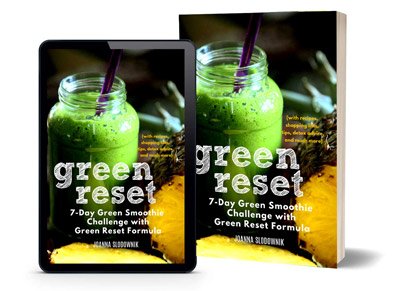Delicious Kiwi Smoothie Recipes
Kiwi provides a wide array of nutrition benefits. According to a study at Rutgers University, kiwi is the most nutrient dense fruit, ounce for ounce.
Kiwi provides 16% of the RDA for fiber and 10% of the RDA for folic acid. Kiwis have phytonutrients, which repair DNA, act as the body’s protection against some cancers, and function as antioxidants.
Studies in Italy performed on 18,000 6-7 year old children have demonstrated health benefits of kiwis to the respiratory tract. The study found that children eating the 5-7 servings of citrus and kiwifruit per week had 44 percent less incidence of wheezing compared to children eating less than once a week.
According to another study, eating kiwi fruit every morning has the same effect as aspirin for heart health (reduces blood clotting), but without the side effects.
Plus, they are delicious in green smoothies!
4 Low Fat Salad Dressing Recipes
If you are already drinking lots of green smoothies and eating blended salads, loaded with healthy greens, you may feel like you want to skip the salad. And if that’s the case, it’s OK.
However, you may still enjoy eating a crunchy salad from time to time (or even every day) – that’s why I want you to give you these recipes, so you don’t soak your greens in store-bought dressings loaded with undesirable ingredients and toppings that are not so good for you (plus your salad can be delicious without them, too!).
Fact is the typical commercial dressing available in stores contains the following main ingredients: fat (usually low quality oil), sugar (usually corn syrup or other artificial sweetener), salt (processed table salt), and vinegar. It is flavored with spices and artificial agents, and contains preservatives that make this factory-made concoction very unhealthy.
So, here are a few ideas for healthy, low fat salad dressings that are quick and easy to prepare…

Why Buy Organic: Organic Food Contains More Nurtients (Part 2)
In the first part of Why Buy Organic? I talked about the pesticides, herbicides, and other toxic substances that are used to grow conventional produce.
However, toxins in conventional produce is only part of the story. The other important piece, is the amount of nutrients in conventional vs organic produce. While certainly eating conventional produce is better than not eating plant foods at all, organically produced fruits and vegetables contain much higher amounts of nutrients, and therefore are more nutrition-rich and health promoting, than their conventional counterparts.
If we care about the nutrition that we receive from our food, we absolutely must not ignore the quality of nutrients plants receive from the soil because the quality of the soil in which the plants grow has a huge influence on our health and on the health of the animals that eat those plants.
Green Smoothie Detox Effect: What to Do About Cleansing Reaction?
If you haven’t been on a highly plant-based diet for a while, chances are you may experience some unpleasant cleansing reactions (detox) when you start drinking your green smoothies. I’ve had many readers report to me that the experience various symptoms that range from mildly unpleasant to quite unbearable.
Why Buy Organic Foods: Pesticides on Popular Produce (Part 1)
The fruits and greens that I use in my green smoothies are fabulous foods, full of vital nutrients that are supposed help keep our bodies strong and immune to disease, right? Well, sort of. The average conventionally grown apple has 20 to 30 artificial chemicals on its skin, even after rinsing.If you’re eating non-organic celery today, you may be ingesting 67 pesticides with it…
Why I Stopped Making Kefir
Sorry, but this post has been removed. Since I became vegan, I no longer recommend dairy-based probiotics, such as kefir. Where Do You Get Your Calcium? The Good, the Bad and the Ugly of Dairy Products



